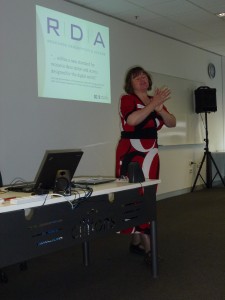As part of the SCIS consultation on 4 December 2012 Renate Beilharz from Box Hill Institute provided an introduction to Resource Description and Access (RDA) and its benefits for education libraries.
The Statement of purpose for RDA states:

RDA will be a new standard for resource description and access, designed for the digital world.
Built on foundations established by the Anglo-American Cataloguing Rules (AACR), RDA will provide a comprehensive set of guidelines and instructions on resource description and access covering all types of content and media.
RDA will enable users of library catalogues and other systems of information organization to find, identify, select, and obtain resources appropriate to their information needs.
During the period of RDA development, the library and cataloguing world updated some key cataloguing principles and developed some conceptual models for resource discovery. RDA is built on these new conceptual models.
If we remember that the highest principle of the International Cataloguing Principles is the ‘convenience of the user’ RDA has aligned with the ICP principles: find, identify, select, obtain. Through RDA we can practise what we preach and work to improve search results and the way these results are displayed. RDA is very much about the user and functionality; focused on users – not items.
The RDA cataloguing standard is designed precisely for an online environment. RDA’s element set has been clearly defined, and incorporated into the Open Metadata Registry, which is a set of RDF-based controlled vocabularies, and a fundamental piece of technical infrastructure for the Semantic Web.
Renate’s overview led into a presentation by SCIS Cataloguing Team Leader, Pam Kadow, outlining proposed changes to the SCIS Standards for Cataloguing and Data Entry for alignment with RDA commencing the second quarter of 2013.
